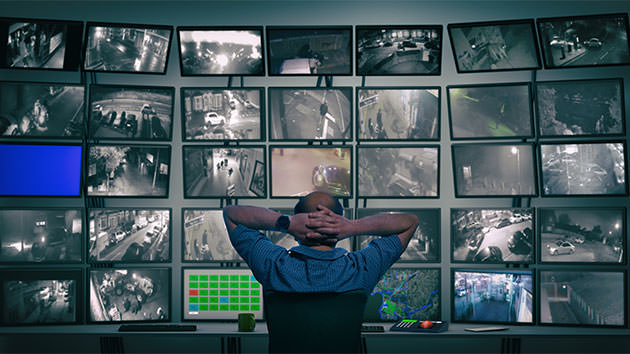Video and Radar for Large-Area Intrusion Detection

December 6, 2017
On Wednesday, Dec. 6, the SIA Webinar series covered how to integrate video surveillance and radar for long-range and large-area perimeter security and intrusion detection. Speakers Mark Brown (FLIR) and Ian Steele (PBX Engineering) discussed the benefits and the challenges of integrating thermal cameras, radar and visible light cameras for detection and tracking. In a live demo, the webinar showcased the solution as it was used overlooking the harbor in Vancouver, Washington, with harbor ferries and other craft moving over the water as well as important infrastructure on shore.
The webinar covered the following topics:
- Designing and Specifying Perimeter Systems
- Perimeter Detection
- Site Challenges and Considerations
- Concept of Operation Factors
- Technologies –Thermal Cameras, Radar and Integration Software
Brown discussed how that with greater threats and the cost of security personnel, the automation and reliability of wide-area perimeter surveillance is more important than ever. Perimeter defense, Brown said, has always been a challenge due to geographical constraints and environmental conditions. As the speakers noted, a host of challenges and considerations are presented when designing a perimeter intrusion detection system. Site geometry, size, location, entry points and concept of operations all contribute to selecting the optimum solution. The overall challenge of perimeter security has been further complicated because many existing technologies are prone to false alarms and expensive to deploy.
Common Perimeter Security Technologies in Use
Perimeter is one facet of the overall solution for a facility that may also include such systems as video management, access control and intercoms. The perimeter solution may be standalone or integrated into a higher-level system.
Technologies in use for perimeter security often include:
- Video surveillance – including visible light cameras and thermal surveillance cameras
- Analytics – for detection, tracking, classification and license plate recognition
- Geospatial detection and tracking – including radar, sonar, GPS, AIS, blue force tracking
- Cable-based detection – including on-fence and buried cable detection
- Unattended ground sensors
- Unmanned systems – including robots and drones
Perimeter systems can also include active deterrents such as acoustical hailing devices, lighting (floodlights, dazzlers), electric fencing and deployable barrier systems.
Additionally, the webinar speakers discussed new threats that have been creating challenges for traditional perimeter security systems. Drones, noted Brown, are becoming the biggest security threat to critical facilities, especially as increased functionality and decreasing price have made drones very accessible to anyone.
Potential Solution Presented
Brown and Steele presented an integrated video- and radar-based system as one solution that could solve some current perimeter security challenges. Coupling visible-light surveillance cameras and a long-range thermal cameras (these are the typically the higher-end thermal cameras) with radar allows persistent tracking. Once the target is acquired by the radar, the camera(s) are called to the target and the user can then engage video tracking. These technologies work together seamlessly to provide the ultimate in intrusion detection by developing a map-based presentation of known and unknown targets and automatically directing security cameras to view the targets.
Brown said this model can be applied also to the emerging drone threat, noting that there are new, specialized radar systems designed for small targets and wide horizontal and vertical fields of view, with target classification built-in.
Using Thermal Cameras for Perimeter Security
The advantage of making thermal part of such a detection and tracking systems are multi-fold, explained Brown. Such cameras offer:
- 24/7 operation in dark or low light areas
- Contrast provides superior analytics performance in outdoor environment, more reliable alarm information
- Better performance in bad weather conditions (rain, fog)
- Not affected by vehicle headlights
- Classification (human or vehicle) works well in all lighting conditions
Thermal cameras are available with varying range capability and resolution to suit application, and today, some sensors providing the capability to blend the visible and thermal streams together. In combination with fixed thermal cameras doing fence line analytics, dual-sensor visible and thermal PTZ cameras are used to verify and track threats
The weakness for thermal, however, is that this technology does not detect color and cannot be used for identification (i.e., can’t see color of clothes, color of vehicles, etc.) Due to this limitation, thermal-only cameras are predominantly used for detection and dual-sensor cameras (combining visible and thermal) are used for active surveillance.
Brown said that as a manufacturer of thermal solutions, FLIR is seeing the price of thermal technology coming down significantly and as a result, it is allowing dual-sensor cameras to become more commonly purchased as such units become more affordable.
Speakers:
- Mark Brown, Vice President, FLIR Systems
- Ian Steele, Managing Principal, PBX Engineering
